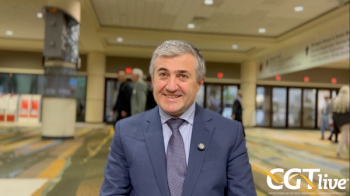
Dr Nina Shah Outlines New Treatments Being Studied for Multiple Myeloma
While there has been progress with using chimeric antigen receptor (CAR) T cells to treat multiple myeloma, these treatments aren’t ready for prime time, said Nina Shah, MD, associate professor, University of California, San Francisco, School of Medicine.
While there has been progress with using chimeric antigen receptor (CAR) T cells to treat multiple myeloma, these treatments aren’t ready for prime time, said Nina Shah, MD, associate professor, University of California, San Francisco, School of Medicine.
Transcript
What progress has been made with CAR T treatments in multiple myeloma?
CAR T treatments are really exciting. They’re at the forefront of what’s being studied in myeloma. They’re not quite ready for prime time, yet, because we still don’t know all of the safety or durability of this treatment.
But one of the exciting things is some of the CAR Ts are actually able to kill myeloma that’s been really resistant, and we’re seeing that in some of the early data presented about the patients who had relapsed and refractory myeloma. And this is really important because some of these patients have no other option. So to have something that really eradicates disease for some patients who were really not able to get a response, that’s really encouraging.
But, like I said before, it’s a therapy that’s not available to everyone just yet. It’s still being studied, particularly for safety and now for efficacy. And once that data is more mature—and I would say that would be maybe in the next 1 to 2 years—we’ll be able to better understand where to position that for a myeloma patient.
What novel treatments in development for multiple myeloma are you keeping an eye on?
We’re looking at ways for myeloma to be attacked, for example, using a different protein on the myeloma surface and tagging that with an antibody or making the antibodies work better. For example, we can maybe activate a T cell and tag that and target it toward an antibody that’s targeting a myeloma cell. We can bring the myeloma cell with the T cell together and make the patient’s own immune system kill the myeloma better.
Or maybe there could be some toxin attached to an antibody, so when the antibody goes to the myeloma cell, it is directly toxic to that cell only. So, you can get specific effects on the myeloma cell. So, really targeting the myeloma cell, itself, with the immune system, is some of the things that we’re looking at.
Some of the other exciting drugs are looking at different intracellular mechanisms, combining known ways of resistance, and unmasking ways to get around that with some intracellular small molecule inhibitors.
Newsletter
Stay at the forefront of cutting-edge science with CGT—your direct line to expert insights, breakthrough data, and real-time coverage of the latest advancements in cell and gene therapy.



































